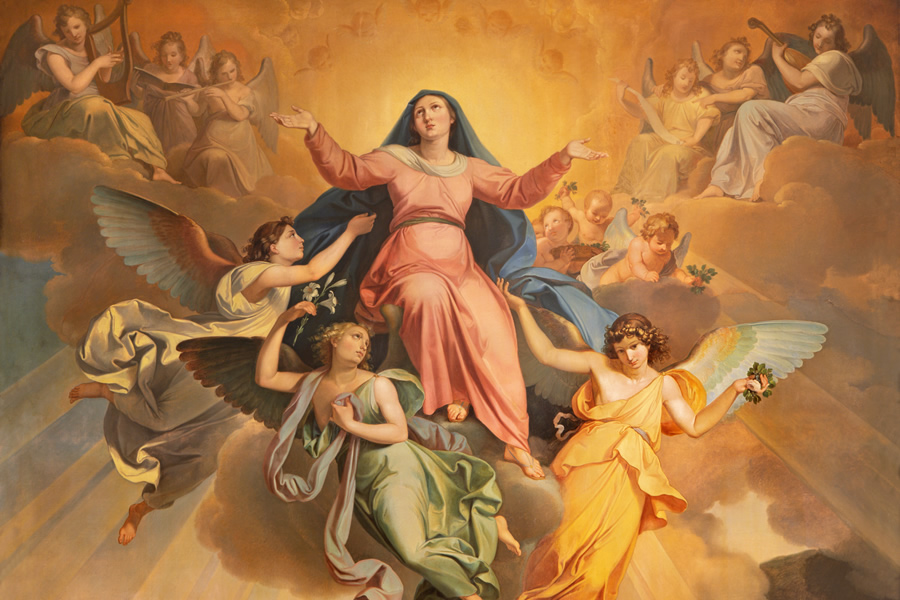
The Assumption of the Blessed Virgin Mary
by Rev. Gabriel Baltes, O.S.B. | 08/10/2025 | A Message from Our PastorDear Parishioners,
August the 15th is the solemnity of the Assumption of the Blessed Virgin Mary. It is one of the three major festivals in honor of Mary, all of which are holydays of obligation. The belief that underlies this liturgical celebration is that at the end of her earthly life, Mary, the mother of Jesus, was assumed body and soul into the glory of heaven.
Theologians and spiritual writers have often taught that because of Mary’s unique selection by God as having been conceived without original sin, as well as her privileged role in giving birth to our Savior Jesus Christ, that her body would be preserved from corruption. Instead, when her time on earth had ended, she became the first to fully share in redemption as her very body was glorified and welcomed into the full presence of God.
While the solemn declaration of Mary’s assumption as a dogma of the church was not pronounced until 1950 by Pope Pius the XII, it had been consistently celebrated by Christians by the 6th century and, most likely, earlier. Eastern rite Catholics and Orthodox Christians refer to this feast as the “Dormition of Mary,” that is, the “falling asleep” of Mary. I have sometimes wondered why the pope chose to publicly proclaim this feast when he did. Perhaps it was because the world desperately needed a sign of hope in the devastating aftermath of the second world war.
Having experienced the unspeakable atrocities of the Holocaust and the unprecedented use of atomic energy to destroy life, how better to respond to these raw expressions of evil than to re-assert the human capacity for goodness and grace. In other words, the proclamation that Mary, a mortal being with a body, has been brought into heaven, is still a promise of hope for the human race because as St. Paul insists, wherever there is sin, grace abound even more. The event of Mary’s assumption is not explicitly described in the Scriptures, a source of revelation for church teaching. Rather it is a belief that emerges from another source of revelation, namely the Tradition.
Because of her assumption into heaven, Mary is recognized as the first to be harvested from humanity. Influenced by this poetic imagery, many places throughout Europe designate August 15 as the official beginning of the harvest season. This is a time of great joy and feasting within cultures, as people delight in the abundant blessings which the earth provides. This led to the custom of people bringing flowers, herbs and other fruits of the earth to the parish church where they would be blessed as an expression of gratitude to God, the creator of all life. The feast of the Assumption became a preferred day for these blessing rituals.
The following prayer from the Roman Ritual articulates the beautiful connection between the earth’s harvest and Mary’s Assumption.
Let us pray.
O God who on this day raised up to heaven the rod of Jesse,
the mother of your Son, Our Lord Jesus Christ,
that by her prayers and patronage you might
communicate to our mortal nature
the fruit of her womb, your very Son;
we humbly implore you to help us use these fruits of the soil
for our temporal and everlasting welfare,
aided by the power of your Son
and by the prayers of his glorious Mother, through Christ our Lord.
Amen.
This year, at our parish liturgies at 8:15am and 7:00pm on the feast of Mary’s Assumption, parishioners are invited to bring a token of flowers, vegetables, herbs or other items from their gardens to church. These can be placed in the sanctuary and ritually blessed after the homily as we offer thanks to God for these gifts of the earth. In doing so, we not only acknowledge God as the giver of all gifts, but we then make them usable for ourselves and others.
Fr. Gabriel Baltes, O.S.B.
BACK TO LIST